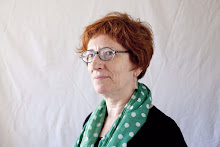One of several questions I asked myself at the time concerned the fact that, apparently, they weren’t going to test for mutations in the BRCA1 and BRCA2 genes. But it so happens that mutations in those genes mean a high risk for breast cancer. I sent them an email asking about it and this was the answer I got: “In the future we hope to include additional analyses that will identify some of the most common breast cancer-associated BRCA mutations.”
The future was actually right there and then, except I didn’t know it until a few weeks later, when I got my results, which included the analysis of three possible mutations in those (in)famous genes. But I didn’t realize that right away. I opened the webpage which contained my results on those genes and only then did I start to grasp the significance of what I was looking at. It was really scary because I was confident – since the future is supposed to lay in the future, not in the present – that those were not the genes I had asked 23andme about. They were. Happily, I don’t carry any of those three mutations.

But the mere fact of not being a carrier doesn’t mean that I don’t carry any other of the countless mutations that can affect these genes. As they had also explained in that reply email, what I got isn’t a diagnostic test of my real risk for hereditary breast cancer. For that, I would have to get the full sequence of those genes, which means they would have to read all the letters in it, and identify every possible mutation. 23andme doesn’t perform this kind of sequencing.





No comments:
Post a Comment